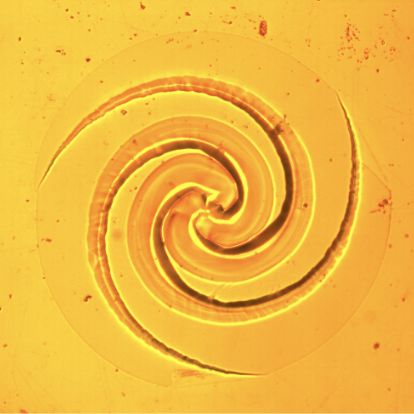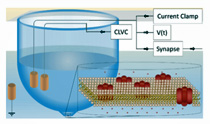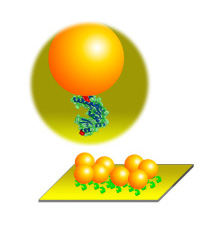Current projects: Condensed Matter Physics, BioPhysics, Nanoscience.

Spontaneous Pattern Formation: The study of pattern formation occupies a central role in the physics of complex systems and indeed in science. A snow flake, a shell, a cloud, a galaxy, present the scientist with as many beautiful problems in pattern formation and nonlinear dynamics. The realization that (non living) chemical systems can give rise to ordered patterns in space and time is “relatively recent”, going back to the discovery of the Belousov–Zhabotinsky reaction and the work of Alan Turing. Read more.

Artificial Axon: Action potentials are the voltage spikes generated by neurons, through a low dissipation mechanism based on ionic currents and molecular switches (voltage gated ion channels). Action potentials form the machine language of the brain. With the Artificial Axon, we extract the action potential out of the neuron and into a synthetic setting, using the same molecular components. Think of taking fire out of the forest and into the cave. You can see a simple application by watching the movie. Read more.

Viscoelastic Enzyme: Different materials can be grouped according to their mechanical properties.
Solids, when subjected to a small shear force, respond with a strain proportional to the force, while liquids respond with a strain rate proportional to the force. Enzymes do both.
With this experiment, we discovered that enzymes are viscoelastic. It means the dynamical response is elastic at high frequencies and resembles a viscous flow at low frequencies. Read more.

The shape of clouds: The question that interests us is what aspects of the cloud can be understood simply in terms of the coherent structures in the flow field. This is a question one can ask of many turbulent systems, and the answer in this case is the shape of the cloud. Read more.